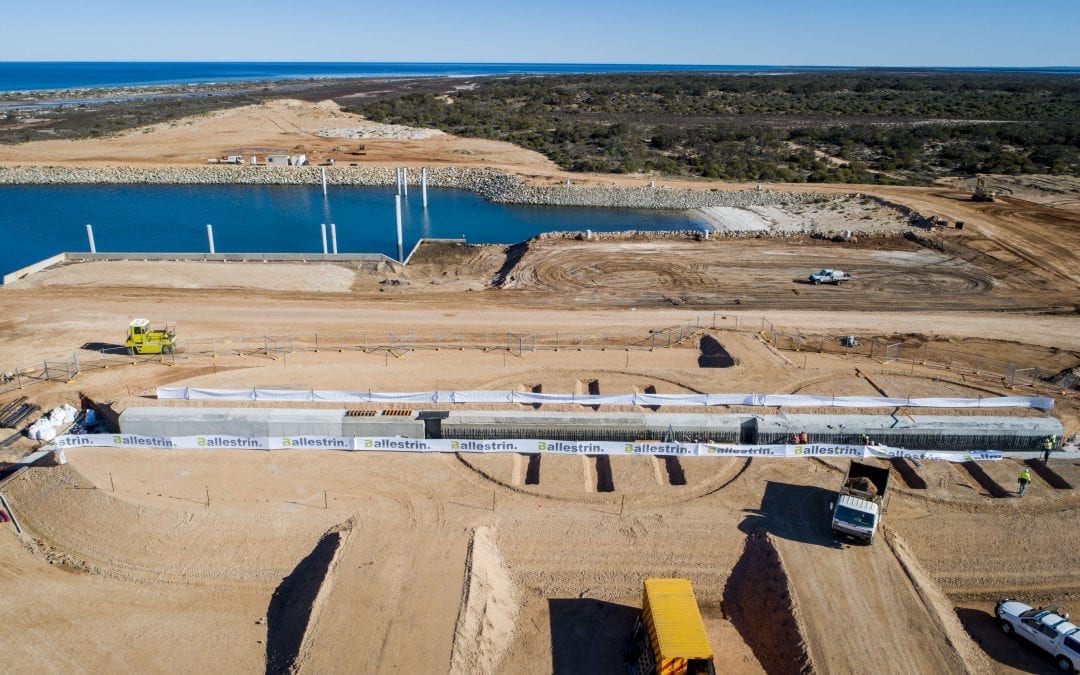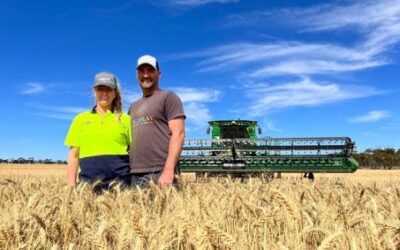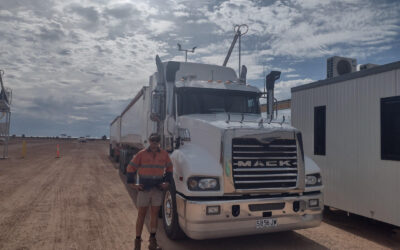The T-Ports bunker sites at Lock and Lucky Bay will be ready to receive grain for the 2019 harvest, with construction now complete.
Construction at the port site is well underway and the transhipment vessel is on-track to arrive in Australian waters before harvest.
T-Ports CEO Kieran Carvill said the bunker sites were close to being ready for harvest deliveries with only a few minor tasks still outstanding.
“We are excited to be able to open the sites in October for grain receivals,” he said.
“Construction is complete and now we are awaiting connection to mains power with SA Power Networks with final IT systems to then be installed in coming weeks.
“All infrastructure and equipment has been purchased, including DOH stackers, weighbridge technology, and sampling probes.”
Mr Carvill said as part of commissioning the Lock site, more than 4,500 tonnes of off-farm grain was delivered into Lock in April.
“This grain was purchased through ADM and will be transported to Lucky Bay when required for export,” he said.
“It was a great opportunity to see the site in action.”
The two bunker sites have a combined storage capacity of approx. 500,000t – 360,000t in 10 bunkers at Lucky Bay and 140,000t in six bunkers at Lock.
Mr Carvill said T-Ports was in discussion with major grain traders in regard to publishing pricing at Lock and Lucky Bay and he encouraged growers to ask for a T-Ports option in their contracts.
“We have provided the trade with all relevant information and we are hopeful they will capitalise on the strong interest from growers in the catchment area by including a dual pricing option for T-Ports deliveries when writing contracts,” he said.
“We know growers need to see pricing at site before contracting so we ask them to speak with their grain marketers about this and request a T-Ports option on contracts, subject to approval before harvest.”
Construction at the port site is well underway. Concrete contractor Ballestrin is currently on-site pouring concrete for the silo foundations. The major silo tunnel floor and walls have been poured and work is currently focussed on the preparation for the pours of the three silo slabs.
Earthworks contractor Buttrose has commenced the wharfside filling works in conjunction with placing and compacting the top layer of the road loop around the port. The haul road joining the bunker site to the port site has been completed along with the reconstruction of the acoustic mound.
“Next month, Ahrens will move onto site to construct the silos,” Mr Carvill said.
“There will be three 8000t silos and a road intake building built at Lucky Bay port.
“Ahrens has ordered the required equipment and has begun construction of various items at its own locations, which it will then transport to Lucky Bay.
“Kilic Engineering will be supplying equipment including bucket elevators and conveyor systems for the inload/outload of grain.”
The Lucky Bay port site will be able to receive grain at a rate of 1000t/hour, while outturn onto the TSV is expected to be around 1500t/hour.
The port will be completed by December and ready for shipping by January/February.
In Shanghai, installation of the material handling systems on the transhipment vessel, the ‘Lucky Eyre’, is well advanced.
“The equipment that forms the material handling systems includes grain scrapers, bucket elevators, boom for loading the ocean-going vessel, gantries and electrical systems,” Mr Carvill said.
“The equipment is being supplied by a range of companies including Australian manufacturers and is currently being installed by ZPMG and CCCC in Shanghai.
“Early commissioning of the vessel will take place during August with the ship due to arrive in Australia before harvest.”
Mr Carvill said the conditions off Lucky Bay had been considered and factored into the construction of the transhipment vessel, which will be able to operate in wind speeds up to 25-28 knots and wave heights up to 2.5 metres.
The transhipment vessel will load ocean-going vessels five nautical miles off the coast.




